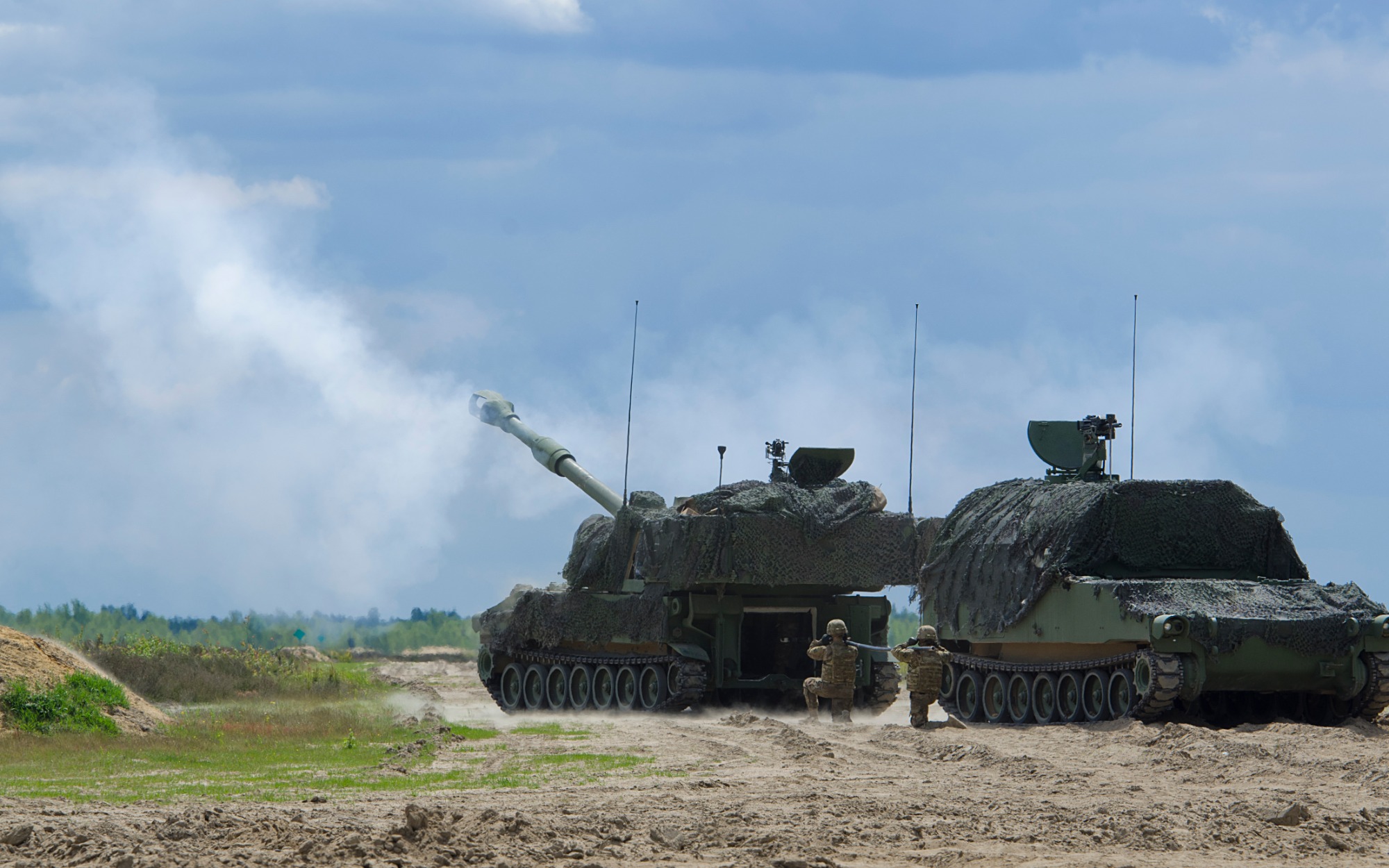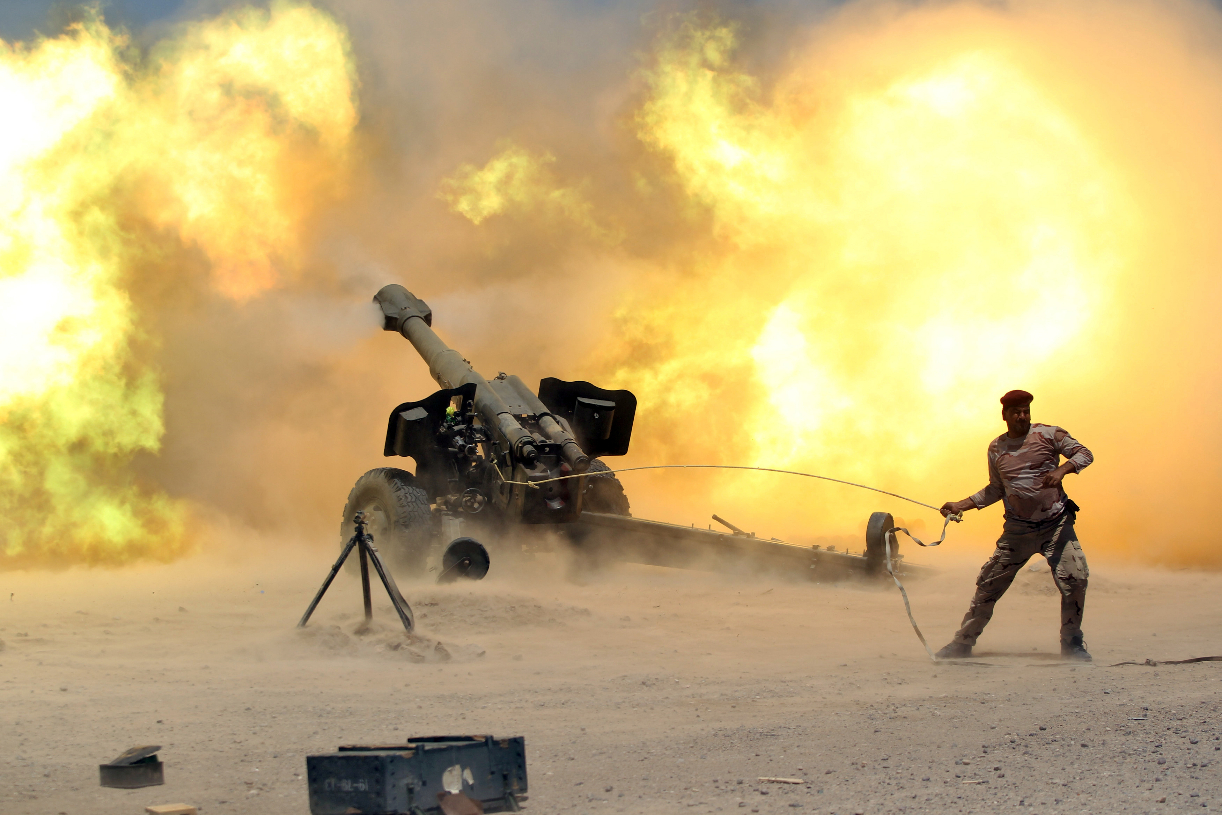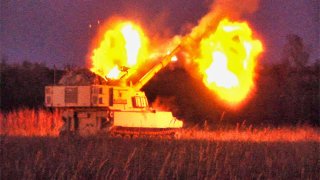XM1155-SC: The Guided Projectile That Could Extend the Range of Army Artillery
Back in October of last year, the United States Army completed a demonstration of the XM1155-SC guided projectile from an M109 Paladin self-propelled howitzer. The round, which was developed by BAE Systems, greatly extended the range of the artillery system.
Back in October of last year, the United States Army completed a demonstration of the XM1155-SC guided projectile from an M109 Paladin self-propelled howitzer. The round, which was developed by BAE Systems, greatly extended the range of the artillery system.
According to BAE Systems, the projectile was aided by GPS and successfully struck the target area after being fired using a Modular Artillery Charge System Zone 5 during a test fire conducted with the Army Combat Capabilities Development Command Armaments Center at Yuma Proving Ground in Arizona.
The recent test fire and previous test results demonstrated how the projectile was on track to provide brigade and division artillery units with range and lethality overmatch, explained Brent Butcher, vice president and general manager of weapon systems at BAE.
"Our XM1155-SC solution adds additional capability to current and future U.S. Army artillery systems," said Butcher. "We're just getting started showing the advanced capabilities that this round brings to the warfighter. This projectile delivers a leap forward in performance and modernization. This successful firing and previous test results show that our concept is on track to provide range and lethality overmatch to the U.S. Army brigade and division artillery units."
BAE Systems is currently under contract to demonstrate navigation and control, networking, and payload technologies that enable precision fires at very long ranges for 155mm projectiles.
Able to Penetrate and Destroy Adversary Defenses
It was in December 2022, via a partnership with the U.S. Army that BAE Systems conducted the first XM1155-SC test fire where the projectile was successfully fired from a 155 mm XM907E2 Extended Range Cannon Artillery (ERCA) test bed and impacted a fixed target beyond ranges previously demonstrated by other precision-guided projectiles fired from the same type of cannon.
The successful firing event occurred just 14 months after the company received an initial $14.8 million prototype development award in October 2021.
The goal of the program has been to develop an advanced, cannon-launched projectile for the defeat of fixed and moving targets in contested environments at more than double the range of existing cannon-launched precision-guided munitions.
BAE Systems was tasked with developing a projectile that could penetrate and destroy adversary defenses through increased range, advanced guidance, lethality, and survivability. The XM1155-SC ordnance further addresses the U.S. Army's modernization goals for a long-range precision fire munitions solution.
Upgraded M109
Back in October, BAE Systems also announced the development of the M109-52, a low-risk, high-performance upgrade to the current 39-caliber cannon, which can provide additional range required in large-scale combat operations.
"We've demonstrated that the integrated system of the M109-52 is a viable solution for long-range precision fires modernization needs," said Dan Furber, director of Ground Vehicle Production for BAE Systems’ Combat Mission Systems business. "Integrating these two highly capable and proven artillery systems provides stable designs and predictable performance."

A 2023 test conducted at Camp Ripley, Minnesota, highlighted the compatibility of the L52 cannon with the M109A7 platform during the live fire exercise. BAE Systems has announced that it will conduct additional testing this year, which will highlight extended range across a variety of projectiles – while the company noted its ability to integrate the proven M109 with proven cannon platforms like the L52 could quickly deliver expanded interoperability on day one with battlefield partners.

The L52 artillery cannon is currently employed by nine NATO and allied partner nations' tactical artillery forces. The L52 has seen service in combat in Ukraine via the German Panzerhaubitze 2000 ("armored howitzer 2000").
Author Experience and Expertise
Peter Suciu is a Michigan-based writer. He has contributed to more than four dozen magazines, newspapers, and websites with over 3,200 published pieces over a twenty-year career in journalism. He regularly writes about military hardware, firearms history, cybersecurity, politics, and international affairs. Peter is also a Contributing Writer for Forbes and Clearance Jobs. You can follow him on Twitter: @PeterSuciu.
All images are Creative Commons.

